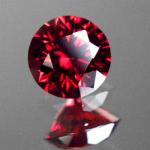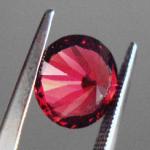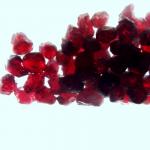
Classes- Alabama
- Alaska
- Arizona
- Arkansas
- California
- Colorado
- Connecticut
- Delaware
- Florida
- Georgia
- Hawaii
- Idaho
- Illinois
- Indiana
- Iowa
- Kansas
- Kentucky
- Louisiana
- Maine
- Maryland
- Massachusetts
- Michigan
- Minnesota
- Mississippi
- Missouri
- Montana
- Nebraska
- Nevada
- New Hampshire
- New Jersey
- New Mexico
- New York
- North Carolina
- North Dakota
- Ohio
- Oklahoma
- Oregon
- Pennsylvania
- Rhode Island
- Tennessee
- Texas
- Utah
- Vermont
- Virginia
- Washington
- West Virginia
- Wisconsin
- Wyoming
| Structure : Cubic Hardness : 7.25 Specific Gravity : 3.8 Refractive index : 1.72 - 1.7 Doubly Refracting (bi-refraction) : none Break open a pomegranate: see the tiny glossy red seeds? Now you can see why garnet comes from the Latin name of pomegranate, granatum . To the ancient world, garnet was a tiny glossy red gem, bursting with fire and brilliance. Thanks to an amazing string of discoveries in the nineteenth and twentieth centuries, if we were to name garnet today we would need a whole fruit salad of references. There's the raspberry of rhodolite, the Welch's juice color of grape garnet, mandarin garnet's fresh orange, and, the lime green of tsavorite and demantoid. There is a garnet to match every color in your wardrobe: you're sure to find one that complements your personal style. In fact, the garnet gem family is a favorite of gem connoisseurs, who can't resist adding more garnet to their collection. There are garnets that change color in different light, translucent green garnets that look like jade, garnets with stars, garnets that have been mined for thousands of years and garnets that were just discovered in the last decade. Garnets are found around the world. It used to be said that garnets come in every color but blue but recently a few, perhaps unique, greenish blue stones discovered in Africa put that maxim to the test. But variety isn't all that garnet has going for it. The members of this extended gem family are all brilliant, durable, all natural, and generally affordable. They are brilliant and beautiful in jewelry, a favorite of designers around the world. Garnets in legend light up the night and protect their owners from nightmares. Garnets have long been carried by travelers to protect against accidents far from home. The garnet family is as chemically complex as its variety suggests. In fact garnet is a group of six closely related minerals: almandine, pyrope, grossular, spessartite, andradite, and uvarovite. In practice many garnets contain a mixture of two or more of these varieties. The trade has names for some of the more distinctive blends, which include purplish red to pink rhodolite and sunset orange malaya, some of the most popular garnets today. And any overview of garnets would not be complete without praise for the two beautiful green garnets, demantoid and tsavorite. Both are rare and brilliant. Demantoid, found in Russia's Ural mountains in the nineteenth century, is one of the most sought after prizes of estate jewelry. Although a trickle of material is being mined today, demand for its brilliance, high dispersion, and pure green color far exceeds supply. Tsavorite is a grass green grossular garnet mined in the bush of East Africa. It was named by Tiffany's in 1969 after the Tsavo National Park, a game reserve in Kenya which is near the first mine. Tsavorite, like demantoid, commands thousands of dollars per carat in fine qualities and is rare over four carats. But, like demantoid and the other beautiful garnets, it is worth a search to find a fine example. Garnets are most commonly found in round, oval, and cushion cuts. Availability depends on variety: tsavorite is very difficult to find in sizes above a carat or two, while rhodolite garnet is available in larger sizes. This durable and brilliant gem is easy to care for, with a hardness of 7.5 to 7.25. Clean with mild dish soap: use a toothbrush to scrub behind the stone where dust can collect. Round Ant Hill Garnet and Ant Hill Garnet Rough for sale. |
- Birth Stone Gems
- Wedding & Anniversary Gems
- How To Guides
- Fireable Gems
- Nonprofits and Guilds
- Gem Show
- Gem Stone Information
- ·Abalone
- ·Achroite (Tourmaline)
- ·Agate ( Chalcedony)
- ·Alexandrite
- ·Almandine ( Garnet )
- ·Amber
- ·Amethyst ( Quartz)
- ·Ammolite
- ·Andalusite
- ·Andradite Garnet
- ·Apatite
- ·Aquamarine ( Beryl )
- ·Aventurine ( Quartz )
- ·Azurite
- ·Benitoite
- ·Bloodstone ( Chalcedony )
- ·Brown Quartz ( Smokey Quartz )
- ·Calcite
- ·Carnelian ( Chalcedony )
- ·Cassiterite
- ·Celestine
- ·Cerussite
- ·Chalcedony
- ·Chatoyant Quartz
- ·Chrysoberyl
- ·Chrysocolla
- ·Chrysoprase (Chalcedony)
- ·Citrine ( Quartz )
- ·Coral
- ·Danburite
- ·Diamond
- ·Diopside
- ·Dioptase
- ·Dravite ( Tourmaline)
- ·Emerald ( Beryl )
- ·Enstatite
- ·Epidote
- ·Euclase
- ·Fire Agate (Chalcedony)
- ·Fluorite
- ·Gold
- ·Goshenite (Beryl)
- ·Grossular Garnet (Tsavorite Garnet)
- ·Gypsum
- ·Heliodor ( Beryl )
- ·Hematite
- ·Hessonite (Grossular Garnet)
- ·Imperial Topaz
- ·Indicolite ( Tourmaline)
- ·Iolite
- ·Ivory
- ·Jadeite
- ·Jasper (Chalcedony)
- ·Jet
- ·Kornerupine
- ·Kunzite
- ·Kyanite
- ·Labradorite
- ·Lapis Lazuli ( Lazurite)
- ·Lazulite
- ·Malachite
- ·Meerschaum
- ·Microcline
- ·Milky Quartz
- ·Moonstone
- ·Morganite ( Beryl)
- ·Nephrite ( Jade)
- ·Obsidian
- ·Oligoclase
- ·Onyx
- ·Opal
- ·Orthoclase
- ·Padparasha ( Corundum)
- ·Pearl
- ·Peridot
- ·Pink Topaz ( Mercury Myst Vapor )
- ·Plasma ( Chalcedony)
- ·Prase ( Chalcedony )
- ·Prehnite
- ·Pyrite
- ·Pyrope ( Garnet )
- ·Rock Crystal ( Quartz )
- ·Rubellite ( Tourmaline)
- ·Ruby ( Corundum)
- ·Sapphire ( Corundum)
- ·Sardonyx ( Chalcedony)
- ·Scapolite
- ·Schorl (Tourmaline)
- ·Shell
- ·Spessarite (Garnet)
- ·Sphalerite
- ·Spinel
- ·Spodumene (Hiddenite - Triphane)
- ·Tanzanite (Zoisite)
- ·Tektites ( Moldavite )
- ·Tiger Eye
- ·Titanite (Sphene)
- ·Topaz
- ·Turquoise
- ·YAG (Garnet)
- ·Zircon


